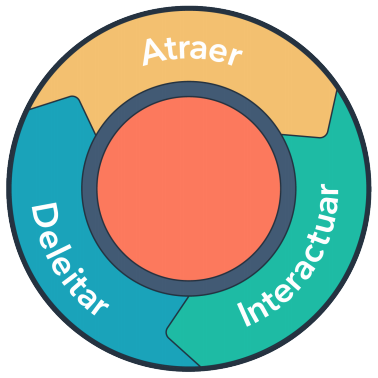1. How to lay the foundations for Inbound Marketing.
1.1. Identify who are the buyer personas of your business.
Your company’s website needs adequate traffic for your SME to get customers. To do this, it is necessary to identify and define buyer persona profiles. These are representations of your ideal customers. Profiles that are based on real data and some educated speculation about demographics, behavioral patterns, motivations, goals and challenges.
Why create these profiles? Because you must select the people who might be most attracted to your products and/or services, people who might be interested in repeating and recommending what you offer. This way it is not only easier to satisfy their needs with your content, but also you would not be wasting your resources, your time, on consumers who are not going to buy from you.
Also, for the same reason, you should keep in mind that not all the marketing actions you perform should be directed to each and every one of your buyer personas. Each campaign may have a type (or several types) of buyer persona associated with specific characteristics and needs. This will give you a clue as to the content that may be of most interest to them, that is, the most useful information for this segment of potential customers and, thus, encourage them to follow their buyer’s journey, which we will see how to use in more detail below. Need a little more help with your buyers?
{{{cta(‘bd8f779a-7e79-4754-9a62-8be6571b5c41’)}}
1.2. Set SMART goals and set priorities.
When implemented correctly, goals can align everyone in your organization. The idea of goals is that everyone in your company works together to achieve them. So, to create, manage and analyze the performance of your team, your content, pages, strategies and campaigns, it’s important to set goals from the start. A SMART goal is characterized by being:
- Specific (Specific) if your goal is to get more visitors to convert into sales opportunities, you should specify how much, for example, with an exact number or percentage within a timeframe.
- Measurable (Measurable) with real statistics and evidence, to make sure you get results. This way you can also adjust strategies and campaigns as needed.
- Achievable (Attainable) to make sure your efforts can pay off. Don’t think of goals that you can’t achieve, your goals always have to be reasonable and realistic.
- Relevant (Relevant) for your business. You have to prioritize and determine which are the main and secondary objectives for your business, this way you can distribute efforts and resources.
- Timely (Timely) because every objective must have a deadline, otherwise you could not measure the performance of your strategy or your campaign. On the other hand, this allows you to observe the results and re-evaluate the suitability and relevance of the objective.
After setting these SMART objectives you must prioritize them according to their relevance for the short term, without leaving aside those important for the medium and long term. How do you do it?
- Think about the first horizon, those objectives that are important to continue generating revenue and optimizing the efficiency of your marketing actions in a more immediate way.
- Consider what should be the third horizon objectives, those that focus on the future, on long-term innovation, but that should only require 10% of your efforts.
- Set objectives in the second horizon that represent a link between the more immediate and the more distant future. Dedicate 20% of your efforts to revaluing what is currently working.

2. How to attract visitors to your website with the methodology.
You should know thatthe Inbound Marketing methodology is based on sharing a certain area of knowledge, that is, the wisdom that a business has of it. In this way you can improve your brand recognition and gain the trust of your target audience. So, during the attraction stage you can use this knowledge, this experience,

